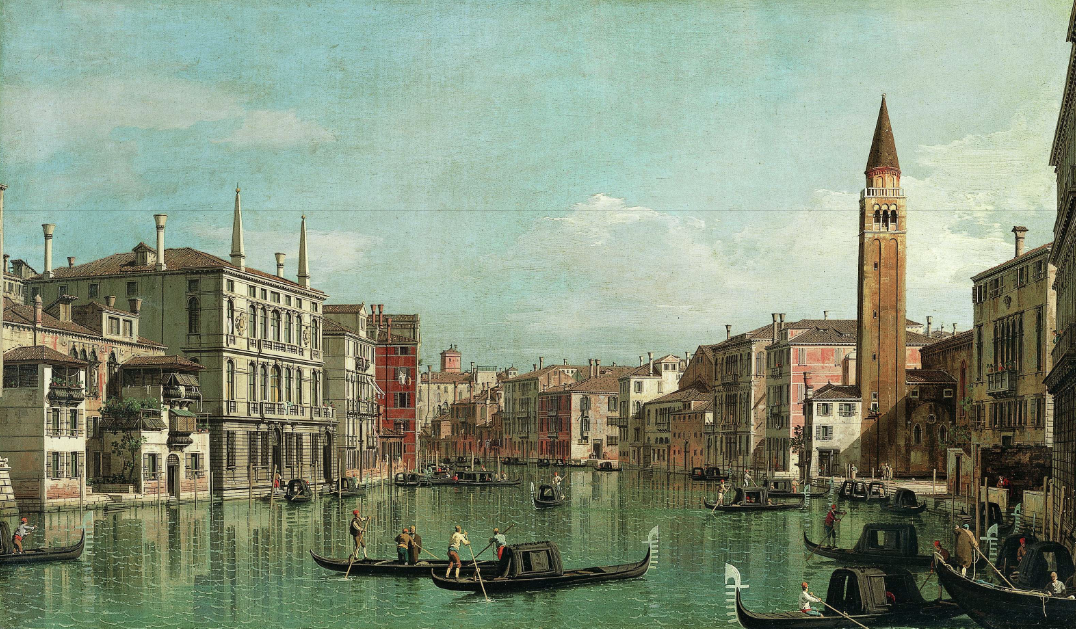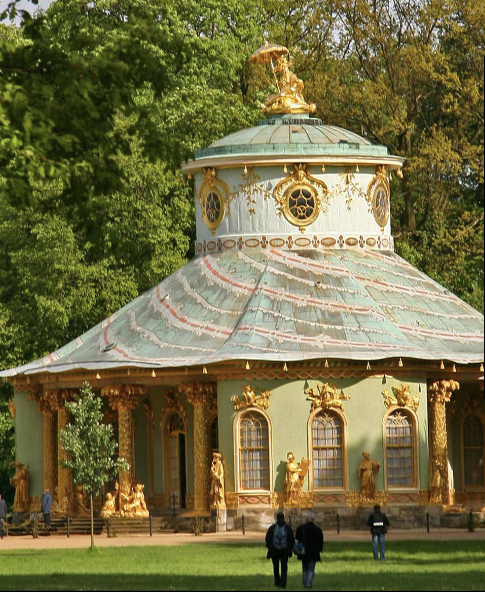Rococo
1/27
There's no tags or description
Looks like no tags are added yet.
Name | Mastery | Learn | Test | Matching | Spaced |
|---|
No study sessions yet.
28 Terms
What does 1715 signify?
Sun King dies
period of Regency
French court moves back to Paris
What does the court move back to Paris mean?
less of absolutist control over the elites
elites are unleashed
Bourgeoisie on the rise
How does the art reflect the current less restricted politics?
art is more ornate, less symmetrical and more colourful and playful
reflected relaxed political stance
How is Rococo defined by? What are its 4 themes?
light colour palette, brighter spaces
asymmetry
themes:
travel
exoticism
illusion
pleasure
What does travel signify? What was the Grand Tour?
18th century Europe was travel boom
specifically for art, culture and education
the grand tour
extended cultural road trip through Europe for the elites
considered a must of a gentleman’s education
young aristocrats would embark on month or year-long trips after finishing formal education
visiting places they read or learned about in school
What was the itinerary of the Grand Tour?
through Europe’s great cultural centres
Italy, Rome, Florence
study ancient ruins and Renaissance masters
collected souvenirs

Canaletto (Giovanni Antonio Canal), The Grand Canal, Venice, Looking Southeast, with the Campo della Carità to the Right, 1730s.
second type of painting as a result of the Grand Tour
vista or veduta of places the gentlemen visited on tour
Landscapes as mementos from their trips
fuelled certain art markets that appealed to grand tourists
this type of art work flourished
idealized version of Venice
clear waters, clean sparkly buildings
looks like a brand new city
beautiful and orderly
What type of paintings did Canaletto make?
developed veduta style
crystal clear Venice canals
he started from real life so that canals are recognizable
he would polish and transform them
created fantasy landscapes of Venice
bring together multiple recognizable places
this increased market value of artworks
he blended truth and idealization
suited Rococo style
charming illusions over realism
What was Rococo exoticism? How did that manifest in art?
Europeans were fascinated by exotic cultures
trade became more systematic between different regions (Asia, Middle East, Europe)
many products became easily available on European market
wealthy Europeans fantasized about the lands they never visited
artistic representations were not accurate representations of those cultures
European designers would cater to the taste of Europeans and create hybrid versions for the elites
What is Chinoiserie?
looking like something from China but not actually from China
told us more about the Europeans than actual Chinese culture
romantic image of China
goods were rare
owning them was a state of wealth
What type of art fell into the Chinoiserie category?
porcelain, silk, lacquered
luxury items
Chinese rooms
silk panels, dragon motifs
What did European artists learn to do?
learned to imitate styles
replicated and produced vases, figurines in Rococo style

Johann Gottfried Büring, The Chinese House, Potsdam, 1755-1764
small pavillion
for tea parties
whimsical Chinese house
designed in a vaguely Asian style
Rococo daydream
figures holding parasols, palm trees
hybrid representation
no actual building in China resembled this
What is Turquerie?
aristocrats would dress in turbans or silks for portraits
fabrics designed with Turkish inspired patterns
authenticity was NOT the goal
What did Europeans want to master?
by 18th century they mastered porcelain
took many years
Why did the elites dress up and recreate exotic fashion?
they wanted to image these places without leaving home
What were the exotic animals of the Rococo period?
exotic animals were the most surprising stars of Rococo art
this was before public zoos
arrival of the strange creatures from abroad was a revelation
Clara the rhino
toured European cities and sparked a rhino mania
artists were mesmerized and painted her
taste for all thing exotic
What is singerie?
the representation of monkeys in art
engaged in activities like wearing human clothing, parodies, misbehaving
comical scenes would decorate Paris walls
satirical
exotic patterns
adorned medallions and wall décor
How did Rococo architecture expand from Baroque?
took exuberant lavish decor to new extremes
difficult to detect background from features
fusing artwork with architecture
creating intimate novel layouts
impressions of being weightless

Balthasar Neumann, The Basilica of the Fourteen Holy Helpers (Basilika Vierzehnheiligen), Bavaria, Germany, 1743-1772
using unusual shaped plans (compared to Baroque and Renaissance that used traditional shaped layouts)
shaped with circles, ovals, overlapping elipses
strategy of working with the body and creating vortexes is blown up in Rococo architecture
funnelling effect
expansion and contraction
colonnades are curved and draw you in
painted ceiling
master of illusions
trompe l’oeil
using stucco
light plaster that could be shaped
central space remains opens
supports tucked into side
elliptical altar not near apse
innovated way of placing it in middle of space and ou can walk around
lots of white, pink, cream tones
gilded
Who was Jean-Antoine Watteau and what genre did he paint?
genre called Fête Galante
garden devoted to love and flirtation
Rococo recognized that love was a powerful intoxicant
e.g. The Embarkation for Cythera
What was Rococo architecture like?
an ease to architecture by creating one level buildings/bungalows
easy access to gardens or vineyards
e.g. Sans Souci Palace
invention of modern living
each room for the pleasure of something
the home study was seen as one of life’s pleasures
How were many women painted during the Rococo?
typical Rococo painting featured woman naked in risqué poses
e.g. The Brunette Odalisque that features her spread eagle and nightdress brought up
frilly-nudes and pink-bottomed goddesses
the pursuit of pleasure looks uncomplicated
Who was Madame Pompador and how did she use art to shape her image?
symbol of the Rococo with uplifting hairstyle, the colour pink
used art to maintain her power
she championed Rococo art
beauty and brains
portraits are regal and virtuous
often holding books, musical instruments, etc.
presented herself as modest, tasteful and indispensable to the king
What were scapulars?
wear it around your neck to ward off evil
if you had one you were sure to go to heaven
What did Tiepolo create?
Scuola Grande dei Carmini
greatest ceiling painter of Rococo
lighting of skies is delightful with cool and calm dawn light, pink and white tones
calm light of the Rococo (vs. thunder and explosions and dark colours of Baroque)
airiness
enchants and seduces you
religious trap with perfect weather conditions, beautiful religious female figures and the scapulars
How did the Rococo depict children?
invented childhood
previously children were seen as mini adults
Rococo showed childhood as something precious and needing to be protected and enjoyed
innocence and freedom

Jean-Honoré Fragonard, The Swing, 1767, oil on canvas.
up and down sexual illusion
lover is on ground looking up her skirt
light, airy, pastel-toned pinks, creams dominate
loose brushstrokes to enhance spontaneity and delight
he is imitating exact pose of Michelangelo’s Adam from Sistine Chapel
secretive ways of adding sexual connotations